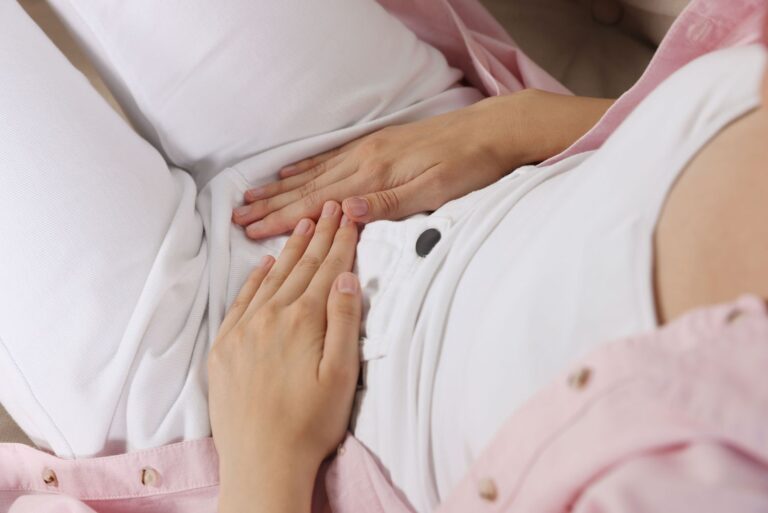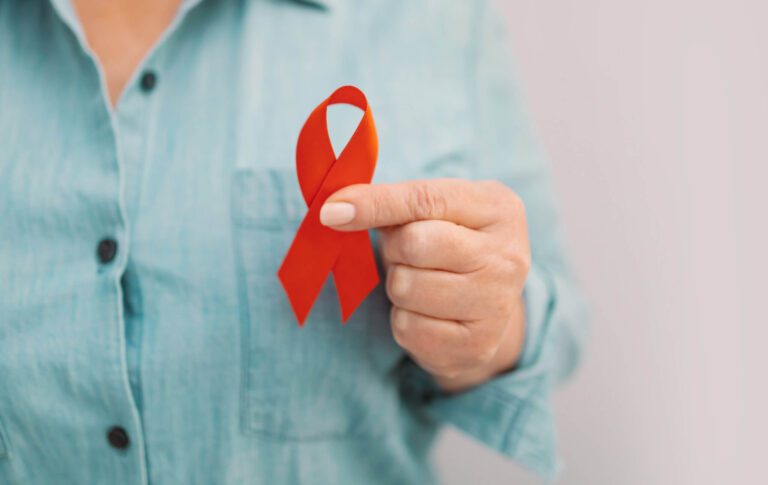How Effective Are Female Condoms in Preventing STDs?
When we discuss sexual health and STD prevention, the conversation often centers on male condoms. But there’s another highly effective tool in the prevention arsenal that is too frequently overlooked: female condoms. These devices provide a unique and valuable way to protect individuals from sexually transmitted diseases (STDs), yet they remain underused and misunderstood by many.
At Hope Across The Globe, we are committed to raising awareness about female condoms as an important sexual health tool. We believe that more information can empower individuals to make better choices for their health. In this blog post, we will explore how female condoms work, their effectiveness in preventing STDs, and why they should be given more attention.
What Are Female Condoms?
Definition and Structure
Female condoms are a type of barrier contraceptive that women can use to protect themselves during sexual intercourse. Unlike male condoms, which are worn over the penis, female condoms are worn inside the vagina. They consist of a soft, flexible material that creates a barrier to prevent semen from entering the uterus.
Female condoms are typically made from materials like nitrile, polyurethane, or latex. These materials are selected for their strength, flexibility, and ability to form an effective barrier against fluids that could transmit infections.
A female condom consists of two rings: one at the closed end, which is inserted into the vagina, and another at the open end, which remains outside the vagina, covering the external genitalia. This design helps prevent STD transmission by blocking both skin-to-skin contact and fluid exchange.
How Do Female Condoms Work?
Female condoms are designed to create a physical barrier that prevents semen, vaginal fluids, and other bodily fluids from coming into contact with the mucous membranes inside the vagina and cervix. When used correctly, female condoms help prevent the transmission of STDs such as HIV, gonorrhea, chlamydia, and even genital herpes and human papillomavirus (HPV).
The condom works by trapping fluids inside, preventing direct skin-to-skin contact between partners during sex. This can be particularly helpful in protecting against STDs transmitted through fluids (e.g., HIV), as well as those passed through skin contact (e.g., herpes, genital warts).
Unlike other forms of birth control (such as pills or IUDs), female condoms offer direct protection against STDs, making them a unique and valuable option for those who are concerned about sexually transmitted infections.
Also Learn About: The Role of Meditation and Stress Management in STD Management
The Effectiveness of Female Condoms in Preventing STDs
How Effective Are Female Condoms?
Research shows that when used consistently and correctly, female condoms are very effective at reducing the risk of STDs. According to studies, they can be 95% effective in preventing pregnancy and 90% effective in preventing STDs. This level of effectiveness is on par with male condoms.
However, the key to their effectiveness lies in how they are used. Like male condoms, female condoms need to be used correctly and every time you have vaginal sex. Incorrect usage or improper fitting can reduce their protective benefits. It is also essential to ensure that the condom does not slip out of place during intercourse, as this can leave one or both partners unprotected.
Comparing Effectiveness with Male Condoms
Both male and female condoms are effective in preventing the transmission of STDs when used properly. However, there are a few differences that might make female condoms a better choice for some individuals:
- Coverage Area: Female condoms cover a larger surface area, including the external genitalia and part of the inner thighs. This extra coverage can provide additional protection against infections that are spread by skin-to-skin contact (such as herpes and HPV), which male condoms may not protect against fully.
- Female Control: Female condoms offer women more control over their sexual health. Since women can insert the condom before intercourse, it removes the need for male partners to participate in condom use. This can be crucial in situations where a male partner may not be willing or able to use a condom.
- Double Protection: Female condoms provide dual protection—against both STDs and unintended pregnancies. While other methods of contraception, such as birth control pills or IUDs, do not protect against STDs, female condoms do, making them a comprehensive protective measure.
Also Learn About: The Future of STD Vaccines: What’s on the Horizon?
Additional Benefits of Female Condoms
Protection Against a Wide Range of STDs
Female condoms are effective not only against STDs transmitted by bodily fluids but also against those transmitted by skin-to-skin contact. Male condoms offer protection against many STDs, but they do not fully cover the areas that could be exposed to genital herpes or HPV. Female condoms, by covering the external genitalia and part of the inner thighs, offer a more comprehensive protective barrier.
While no method is 100% effective, the increased coverage offered by female condoms provides an added layer of security for those who are at higher risk for STDs or are concerned about infections that male condoms may not fully protect against.
Empowerment and Control for Women
For women, the ability to initiate condom use can be empowering. In many relationships, especially those involving unequal power dynamics, women may find it difficult to negotiate condom use with their male partners. Female condoms offer a means of control, allowing women to take charge of their sexual health and make decisions without relying on their partner’s cooperation.
This is particularly important in situations where a woman may be at risk for STDs due to a partner’s sexual behavior or infidelity. The ability to use a female condom without requiring the male partner to take action ensures that women have more autonomy over their health.
Fewer Side Effects
Some individuals may experience allergic reactions or sensitivities to latex condoms. Female condoms made from nitrile or polyurethane are hypoallergenic, making them an ideal alternative for those who cannot use latex products. These materials also do not contain any spermicides, which some people find irritating.
How to Use Female Condoms Correctly
Step-by-Step Guide for Proper Use
To maximize the effectiveness of female condoms, it is important to follow the correct procedure for use. Here’s a step-by-step guide to ensure you use them properly:
- Check the Expiration Date: Before using a female condom, always check the expiration date on the packaging. An expired condom may not provide the protection you need.
- Open the Package Gently: Be sure to open the condom package carefully. Avoid using sharp objects that could tear the condom.
- Positioning the Inner Ring: Pinch the inner ring at the closed end of the condom and insert it into the vagina. The ring should sit comfortably inside the vagina and cover the cervix. You may need to guide the condom in with your fingers.
- Ensure the Outer Ring is Outside: The outer ring should remain outside the vagina, covering the external genitalia. Ensure that it stays in place during intercourse.
- During Intercourse: Keep the condom in place during the entire sexual act. It should not slip out or twist. If the condom moves out of position, stop and insert a new one.
- After Intercourse: Once intercourse is finished, carefully remove the female condom by holding the outer ring. Gently twist it to prevent any semen or fluids from spilling out.
- Dispose of the Condom Properly: Dispose of the condom by wrapping it in tissue or a similar material. Do not flush it down the toilet, as it may cause plumbing issues.
Tips for Ensuring Proper Use
- Always use a new condom for each act of intercourse. Reusing a female condom can increase the risk of breakage or slippage.
- Avoid using oil-based lubricants, as these can weaken the material of the condom. Water-based or silicone-based lubricants are better alternatives.
- Practice inserting the female condom before using it in a sexual situation to get comfortable with the process.
Common Myths and Misconceptions About Female Condoms
Myth 1: Female Condoms Are Difficult to Use
One of the most common myths about female condoms is that they are difficult to use. While they may take a little getting used to, many people find them just as easy to use as male condoms once they become familiar with how they work. Female condoms come with clear instructions and practice can help ease the process.
Myth 2: Female Condoms Are Ineffective Against STDs
Another myth is that female condoms do not provide adequate protection against STDs. However, research shows that female condoms are highly effective at reducing the risk of STDs when used correctly. Studies have shown that the efficacy of female condoms in preventing HIV transmission is comparable to that of male condoms.
Myth 3: Female Condoms Are Uncomfortable for Both Partners
Some people believe that female condoms are uncomfortable, but this is generally not the case. Female condoms are made of soft, flexible materials designed for comfort. Additionally, some individuals report that the extra coverage provided by female condoms enhances pleasure, especially for women.
Conclusion: Female Condoms—A Vital Tool for Sexual Health
In conclusion, female condoms are an effective and often underutilized option for STD prevention and contraception. Their ability to provide comprehensive protection against a variety of STDs and unintended pregnancies makes them an invaluable tool in maintaining sexual health.
Female condoms offer unique benefits, including more control for women over their sexual health and the ability to protect against both fluid-borne and skin-to-skin transmitted infections. While proper usage is key, they provide an essential layer of protection when used correctly.
If you’re looking for a reliable way to protect yourself and your partner, female condoms are a worthy consideration. By combining female condom use with regular STD testing, you can take charge of your sexual health and reduce your risk of infections.
At Hope Across The Globe, we are committed to providing the information and resources you need to make informed decisions about your sexual health. Always prioritize safety, stay informed, and remember that your health is your most valuable asset.
Related Tag: Free STD Testing Jacksonville






